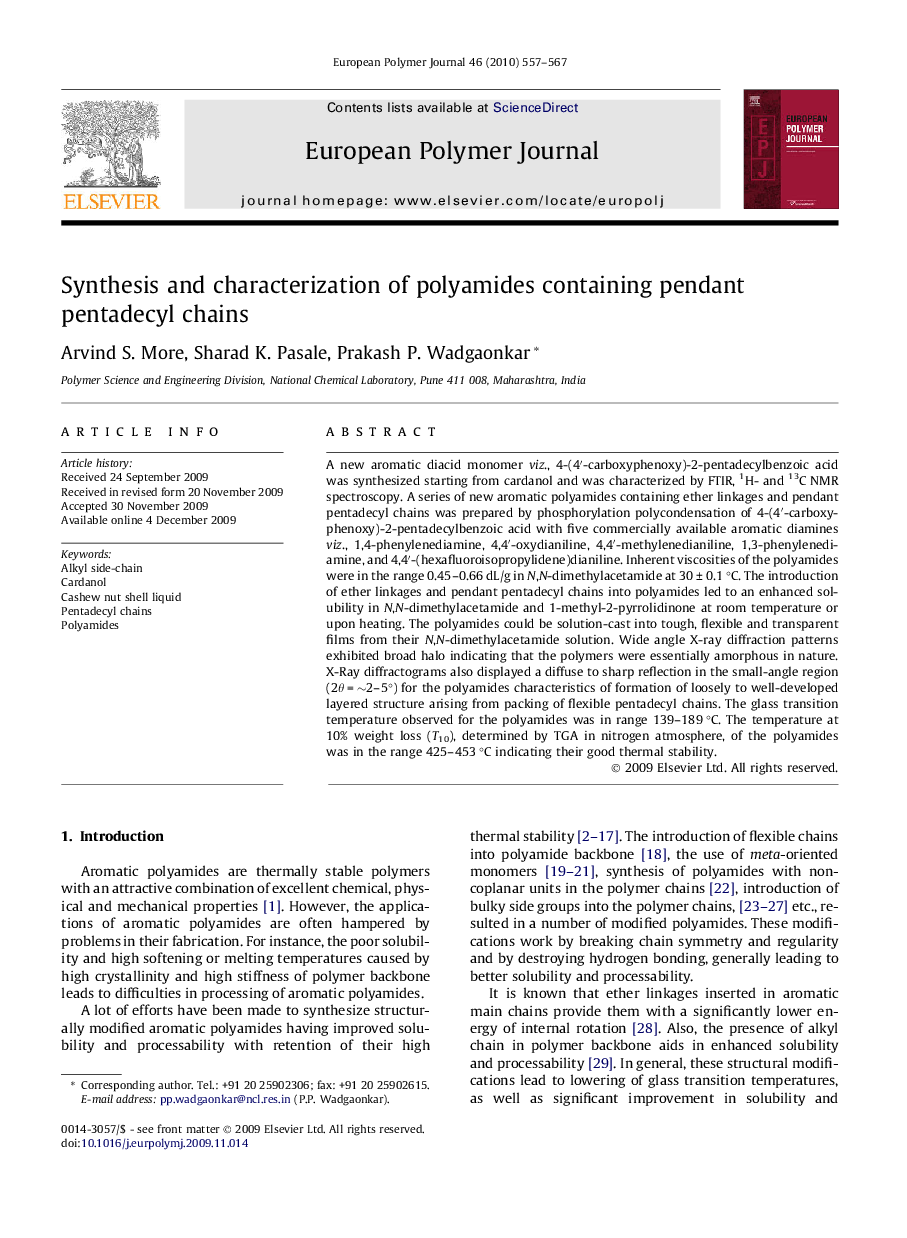| Article ID | Journal | Published Year | Pages | File Type |
|---|---|---|---|---|
| 1400013 | European Polymer Journal | 2010 | 11 Pages |
A new aromatic diacid monomer viz., 4-(4′-carboxyphenoxy)-2-pentadecylbenzoic acid was synthesized starting from cardanol and was characterized by FTIR, 1H- and 13C NMR spectroscopy. A series of new aromatic polyamides containing ether linkages and pendant pentadecyl chains was prepared by phosphorylation polycondensation of 4-(4′-carboxyphenoxy)-2-pentadecylbenzoic acid with five commercially available aromatic diamines viz., 1,4-phenylenediamine, 4,4′-oxydianiline, 4,4′-methylenedianiline, 1,3-phenylenediamine, and 4,4′-(hexafluoroisopropylidene)dianiline. Inherent viscosities of the polyamides were in the range 0.45–0.66 dL/g in N,N-dimethylacetamide at 30 ± 0.1 °C. The introduction of ether linkages and pendant pentadecyl chains into polyamides led to an enhanced solubility in N,N-dimethylacetamide and 1-methyl-2-pyrrolidinone at room temperature or upon heating. The polyamides could be solution-cast into tough, flexible and transparent films from their N,N-dimethylacetamide solution. Wide angle X-ray diffraction patterns exhibited broad halo indicating that the polymers were essentially amorphous in nature. X-Ray diffractograms also displayed a diffuse to sharp reflection in the small-angle region (2θ = ∼2–5°) for the polyamides characteristics of formation of loosely to well-developed layered structure arising from packing of flexible pentadecyl chains. The glass transition temperature observed for the polyamides was in range 139–189 °C. The temperature at 10% weight loss (T10), determined by TGA in nitrogen atmosphere, of the polyamides was in the range 425–453 °C indicating their good thermal stability.
Graphical abstractFigure optionsDownload full-size imageDownload as PowerPoint slide
